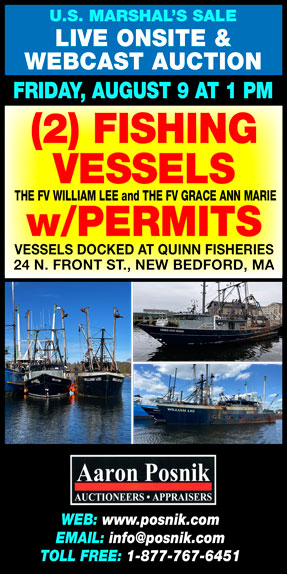Cold weather here in the Northeast means many fishermen have hauled-out and will be making repairs over the coming months – either by themselves or by working with local marinas or boatyard facilities.
Cold weather, of course, also means that some materials — I am thinking metal pipes and such — may be under stress due to the frigid temperatures and may fracture unexpectedly or need to be thawed out.
These repairs may necessitate “hot work.” 
Hot work is defined by the National Fire Prevention Association (NFPA) as any process — such as welding, grinding, hot riveting, pipe thawing, and other heat treatments — that requires a flame or heat, or that produces a spark.
There are exceptions.
For example, fireworks are not included.
So, I hope your New Year’s Eve will be (or was) enjoyable, if pyrotechnics are your cup of tea.
As with a number of other hazardous processes, there are regulations that must be met when engaging in hot work.
Marinas and boatyards often have an approved designated area specifically for hot work.
This would be an area free of flammable materials and fuels — with adequate ventilation – and with fire extinguishers at the ready.
The NFPA is the agency responsible for promulgating codes and standards related to hot work.
The association has released a 2019 revision of its hot work codes, NFPA 51B, which some of you may want to consult if hot work is on your agenda or could be.
Hot work codes
Let’s take a look at recent changes in the codes.
First the requirement for fire extinguishers has changed.
Fire extinguishers required to be on hand in hot work designated areas must now be in compliance with the NFPA 10 Standard for Portable Fire Extinguishers.
The individual preparing to work in a designated area must ensure that NFPA 10 compliant extinguishers are available.
Likewise, the hot work operator must ensure that there are no combustible materials within 35′ of the hot work site.
This is also a new regulation.
If hot work is to be done in a non-designated area, a written permit is required before hot work can begin. These areas are termed permit-required areas.
A permit authorizing individual (PAI) must inspect the area and certify that it is safe for hot work.
There are 22 new statements that stipulate what the PAI has to certify. These include:
• The PAI has the discretion to increase beyond 35′, or reduce, the distance between the hot work and nearby combustible materials;
• The permit period cannot exceed 24 hours; and
• The PAI must visit the permitted area during the permit period.
Fire watch and fire monitoring
NFPA 51B contains improved definitions for fire watch and fire monitoring, as well as clarification of the role of the fire watch and of the provisions associated with fire monitoring.
In certain situations, the permit authorizing individual (PAI) may require a fire watch.
These are generally situations — usually in a permit required area — where combustible materials such as floors cannot be moved beyond the 35′ mark or where the operation may generate sparks that may reach beyond 35′.
The person designated as the fire watch has three responsibilities:
1) To continually observe the hot work operation;
2) To maintain the “fire-safe” environment; and
3) To respond to any emergency.
Under the revised code, the fire watch must remain on watch for at least one hour after the hot work has concluded. The previous post-watch period was only 30 minutes.
The PAI may require a period longer than one hour, if justified.
Fire monitoring is not a person, but rather a protocol put in place to ensure that the fire is not smoldering in any cracks or nearby materials.
The PAI may require that fire monitoring take place for up to three hours post-hot work.
In order to be designated a PAI or a fire watch, an individual must have completed something called “Hot Work Safety Training.”
There are a number of organizations that offer this training. But, Massachusetts, for example, only recognizes the NFPA training — which is available online or in person.
This article is clearly geared toward marinas and boatyards, but is meant to convey to everyone doing hot work — whether at home or on a vessel — that the precautions that need to be taken are numerous. Injury, loss of life, and loss of homes, buildings, or boats can happen as a result of hot work.
If you are doing hot work in your yard, remember that dry grasses and leaves are flammable.
If you are welding on the boat, flammable gases and dusts — not to mention fuel lines and fuel tanks — are a major hazard. In either case, a hot work permit is probably required.
Seek consultation with your local fire department, harbormaster, or other hot work-certified individual before you begin.
You can find information about the Hot Work Safety Certification program at <https://www.nfpa.org/Training-and-Events/By-topic/Hot-Work?icid=D903>.
Ann Backus, MS, is the director of outreach for the Harvard School of Public Health’s Department of Environmental Health in Boston, MA. She may be reached by phone at (617) 432-3327 or by e-mail at <abackus@hsph.harvard.edu>.
FISH SAFE
• Expect your marina or boatyard facility to comply with the revised NFPA 51B 2019 for hot work.
• Seek consultation with your local fire department, harbormaster, or other hot work-certified individual before you begin hot work.
• Have a safe New Year 2020.







